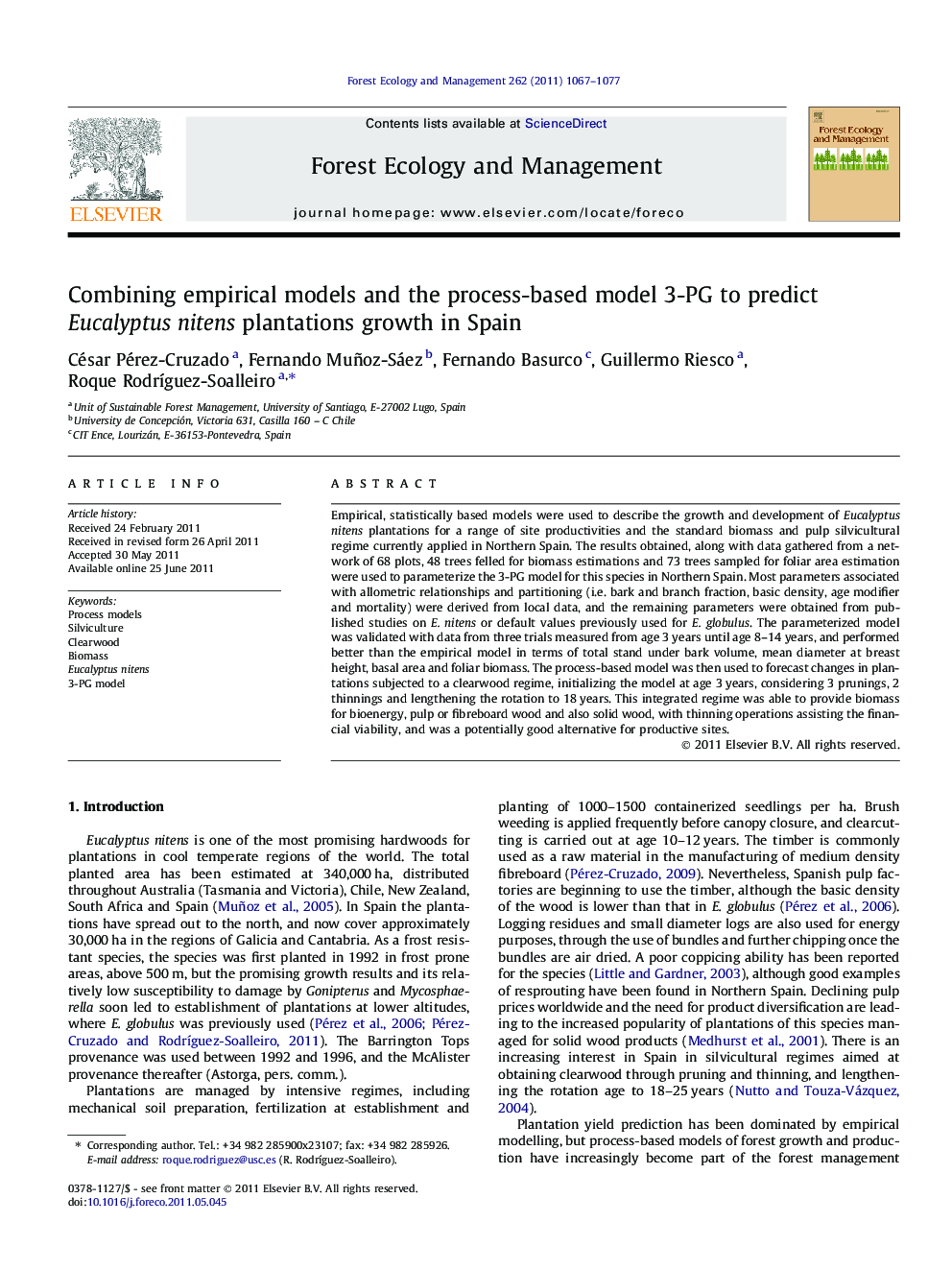| Article ID | Journal | Published Year | Pages | File Type |
|---|---|---|---|---|
| 87850 | Forest Ecology and Management | 2011 | 11 Pages |
Empirical, statistically based models were used to describe the growth and development of Eucalyptus nitens plantations for a range of site productivities and the standard biomass and pulp silvicultural regime currently applied in Northern Spain. The results obtained, along with data gathered from a network of 68 plots, 48 trees felled for biomass estimations and 73 trees sampled for foliar area estimation were used to parameterize the 3-PG model for this species in Northern Spain. Most parameters associated with allometric relationships and partitioning (i.e. bark and branch fraction, basic density, age modifier and mortality) were derived from local data, and the remaining parameters were obtained from published studies on E. nitens or default values previously used for E. globulus. The parameterized model was validated with data from three trials measured from age 3 years until age 8–14 years, and performed better than the empirical model in terms of total stand under bark volume, mean diameter at breast height, basal area and foliar biomass. The process-based model was then used to forecast changes in plantations subjected to a clearwood regime, initializing the model at age 3 years, considering 3 prunings, 2 thinnings and lengthening the rotation to 18 years. This integrated regime was able to provide biomass for bioenergy, pulp or fibreboard wood and also solid wood, with thinning operations assisting the financial viability, and was a potentially good alternative for productive sites.
► The 3-PG model was parameterized for Eucalyptus nitens plantations in Northern Spain. ► 3-PG validation gave similar accuracy than empirical models in use. ► 3-PG provided timber and biomass yield for alternative silvicultural regimes. ► A clearwood regime is a potentially good alternative for productive sites.
